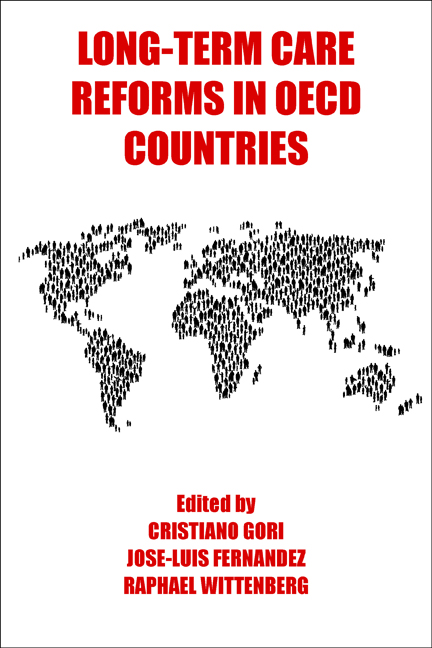Ten - Policies to support informal care
Published online by Cambridge University Press: 19 August 2022
Summary
Introduction
Informal care – help and hands-on care provided by relatives, neighbours and friends – is a significant source of support for dependent younger and older adults. According to findings from the second European Quality of Life Survey conducted in 2007/08, close to a quarter of adults in the EU27 provide care for an older or disabled relative, and about 8 per cent do so on a daily basis (Anderson et al, 2009, p 35). Informal caregivers clearly outnumber the social care workforce and provide up to 80 per cent of overall care hours, even in countries with a well-developed social care infrastructure (Glendinning et al, 2009, p 5; Marin et al, 2009, p 5; Miller et al, 2009, p 2; Triantafillou et al, 2010, p 29). Based on a replacement cost approach, the economic value of unpaid care in 2011 was estimated at £119 billion for the UK, exceeding the annual cost of the National Health Service (NHS) (Buckner and Yeandle, 2011). Given the mainstay role of informal care in long-term care (LTC) systems, it can be expected to be an integral part of LTC policy approaches.
In fact, facilitating care in the community has assumed high priority in LTC policy in the past 15 years, putting informal care more or less explicitly on the policy agenda. Against the backdrop of austerity policies, in some countries there is an increased interest in informal care as a low-cost mode of providing help to dependent older people. Transitions to formal care and (early) nursing home placement have been shown to depend on access to informal care, stability of informal care networks and caregiver burden (see, for example, Allen et al, 2012). Thus, providing support to informal care seems to pay off from a public finance perspective. In addition, shared formal-informal care arrangements rather than either state or family responsibility seem to meet the preferences of care recipients and their families (IMSERSO, 2004, 2006; Socialstyrelsen, 2004, 2012b; Sundström and Tortosa, 2006; Sancho, 2011). Against this backdrop, supporting community and informal care comes as a natural choice.
However, informal care also comes at substantial costs for both the care recipient and the carer. (Re)negotiating family care affects care recipients’ perceived autonomy (Grootegoed and van Dijk, 2012). The care recipient also prefers formal care when family relationships are strained (Kröger, 2011).
- Type
- Chapter
- Information
- Long-Term Care Reforms in OECD CountriesSuccesses and failures, pp. 219 - 244Publisher: Bristol University PressPrint publication year: 2015

